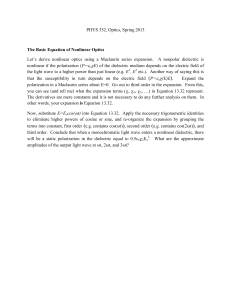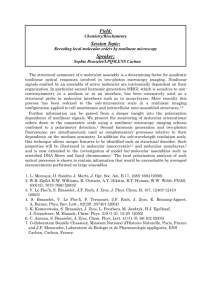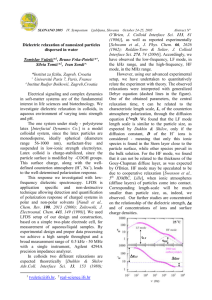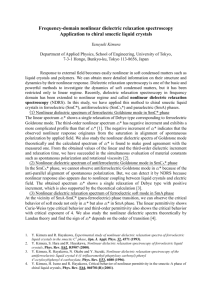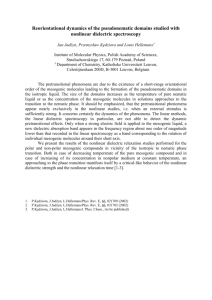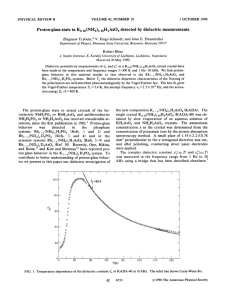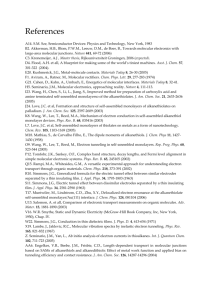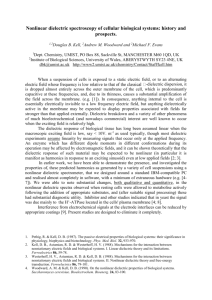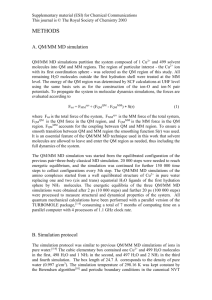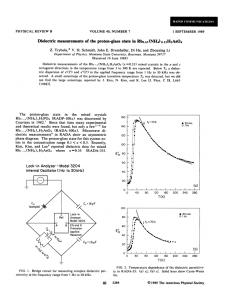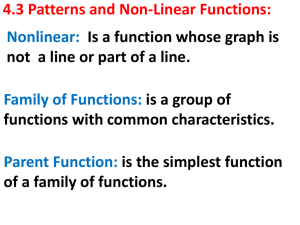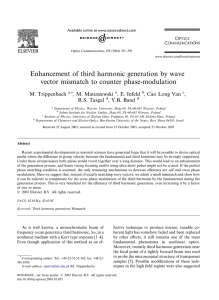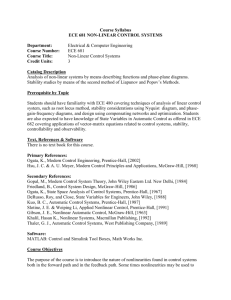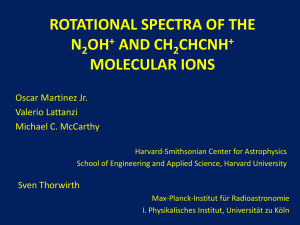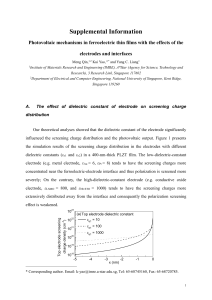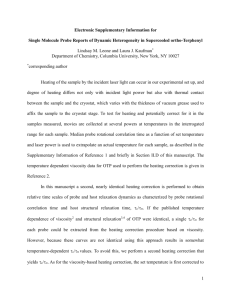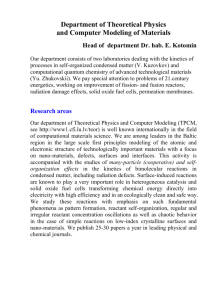Linear and nonlinear expressions for the harmonic components of
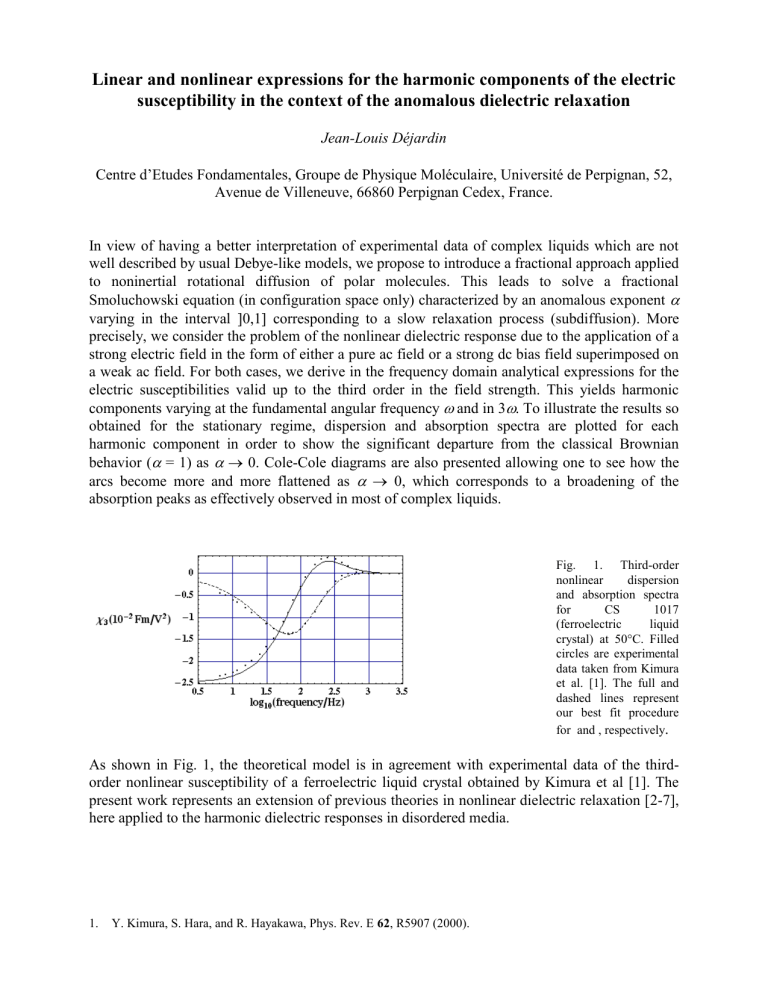
Linear and nonlinear expressions for the harmonic components of the electric susceptibility in the context of the anomalous dielectric relaxation
Jean-Louis Déjardin
Centre d’Etudes Fondamentales, Groupe de Physique Moléculaire, Université de Perpignan, 52,
Avenue de Villeneuve, 66860 Perpignan Cedex, France.
In view of having a better interpretation of experimental data of complex liquids which are not well described by usual Debye-like models, we propose to introduce a fractional approach applied to noninertial rotational diffusion of polar molecules. This leads to solve a fractional
Smoluchowski equation (in configuration space only) characterized by an anomalous exponent
varying in the interval
0,1
corresponding to a slow relaxation process (subdiffusion). More precisely, we consider the problem of the nonlinear dielectric response due to the application of a strong electric field in the form of either a pure ac field or a strong dc bias field superimposed on a weak ac field. For both cases, we derive in the frequency domain analytical expressions for the electric susceptibilities valid up to the third order in the field strength. This yields harmonic components varying at the fundamental angular frequency
and in 3
. To illustrate the results so obtained for the stationary regime, dispersion and absorption spectra are plotted for each harmonic component in order to show the significant departure from the classical Brownian behavior (
= 1) as
0. Cole-Cole diagrams are also presented allowing one to see how the arcs become more and more flattened as
0, which corresponds to a broadening of the absorption peaks as effectively observed in most of complex liquids.
Fig. 1. Third-order nonlinear dispersion and absorption spectra for CS 1017
(ferroelectric liquid crystal) at 50°C. Filled circles are experimental data taken from Kimura et al. [1]. The full and dashed lines represent our best fit procedure for and , respectively .
As shown in Fig. 1, the theoretical model is in agreement with experimental data of the thirdorder nonlinear susceptibility of a ferroelectric liquid crystal obtained by Kimura et al [1]. The present work represents an extension of previous theories in nonlinear dielectric relaxation [2-7], here applied to the harmonic dielectric responses in disordered media.
1.
Y. Kimura, S. Hara, and R. Hayakawa, Phys. Rev. E 62 , R5907 (2000).
2.
W. T. Coffey and B. V. Paranjape, Proc. R. Ir. Acad. 78A , 17 (1978).
3.
J. L. Déjardin,
Dynamic Kerr Effect , (World Scientific, Singapore, 1995).
4.
J. L. Déjardin and Y. P. Kalmykov, Phys. Rev. E 61 , 1211 (2000).
5.
J. L. Déjardin and Y. P. Kalmykov, J. Chem. Phys. 112 , 2916 (2000).
6.
J. L. Déjardin, Y. P. Kalmykov, and P. M. Déjardin, Adv. Chem. Phys. 117 , 275 (2001).
7.
J. L. Déjardin, J. Chem. Phys. 117 , 1750 (2002).

